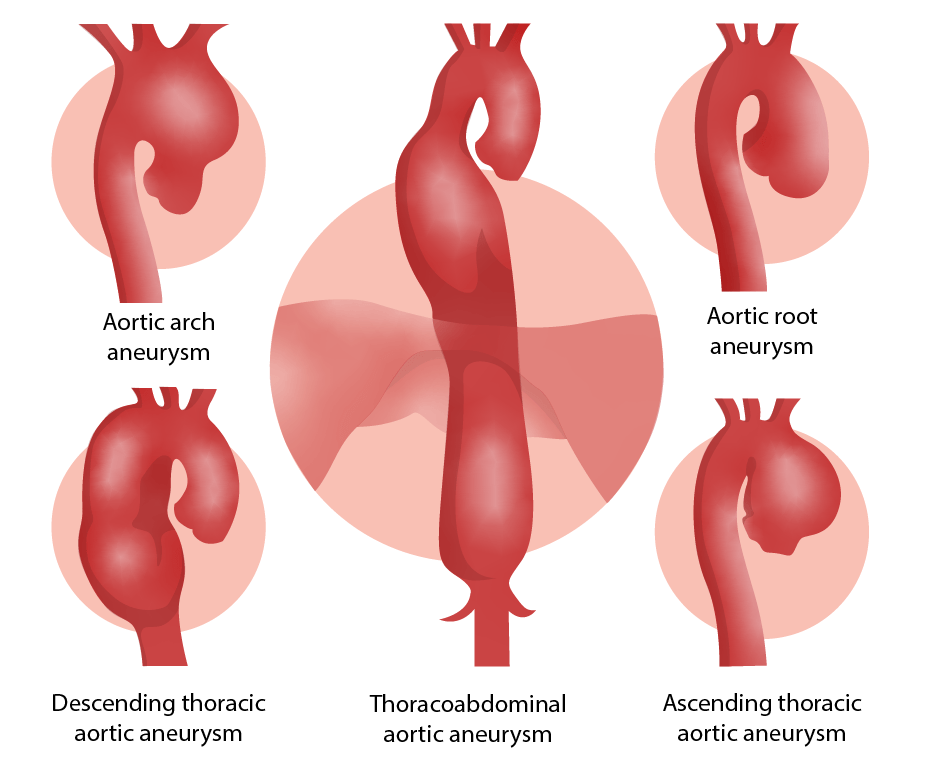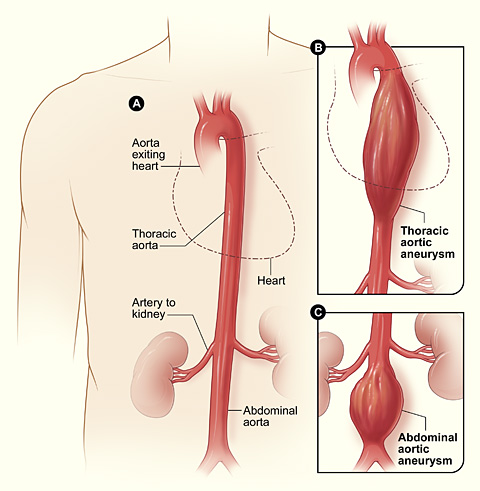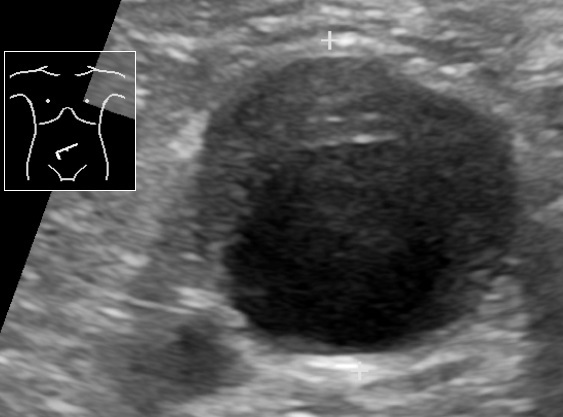Playlist
Show Playlist
Hide Playlist
Aortic Aneurysm and Dissection: Medial Architecture
-
Slides Aortic Disease.pdf
-
Reference List Pathology.pdf
-
Download Lecture Overview
00:01 Now, when we're talking about some of the causes for aortic aneurysm and dissection. 00:08 Hypertension is going to be a major cause. 00:11 Hypertension affects the vascular tone, and the patency of the vessels of the vasa vasorum. 00:19 And if you have high systemic pressures, hypertension, you will get a progressive concentric stenosis of the arterioles of the the vasa vasorum, which means that you will have progressive ischemia of that watershed zone between where the vessels the vasa vasorum perfuse the outer two thirds of the media and how far blood can diffuse or oxygen can diffuse from the luminal contents. 00:44 And that area is now greyed out here. 00:46 And with hypertension, we're going to have a zone of smooth muscle cells that will ultimately become ischemic and die. 00:53 And if they are dead, they're obviously not making their synthetic, they're not doing their synthetic function. 01:00 We can also have inflammation of the vasa vasorum surround each one of our arterioles in the vasa vasorum, you now see little blue dots, those are inflammatory cells, and diseases such as syphilis, tertiary syphilis will cause an endarteritis. 01:16 So the arterioles, of the vasa vasorum and arterioles obliterans: endarteritis obliterans. 01:23 That is due to inflammation because the syphilitic organisms set up shop there. 01:28 And when the immune system recognizes that they have infected and invaded those vessels, they come in and attack. 01:34 That attack that inflammatory process trying to get rid of the treponemes that are causing the syphilis will actually lead to destruction of the vessel. 01:43 And again, the outer two-thirds of the media are going to die as a consequence of inflammation of the vasa vasorum. 01:53 Here's the other part of the equation. 01:54 If we make the wall, the innermost intima of the vessel too thick with atherosclerotic plaques, such as indicated here now on the lower right hand side, that's going to increase the diffusion distance. 02:08 And that same watershed zone the inner third, and the watershed zone of the media is going to die become ischemic and die, not making its synthetic materials to maintain the integrity of the media. 02:21 And then you can have infections, so called mycotic aneurysms. 02:25 When we say mycotic it doesn't mean fungus; it happens to mean just infection in this case, and infections with inflammatory mediators, proteases, reactive oxygen species and all the things that happen with inflammation and an infection will cause necrosis of the media as well, which will impact clearly the integrity of the aortic wall. 02:47 And then let's get back to our TGF-beta. 02:50 TGF-beta receptor story having to do with the fibrillin microfibrils. 02:56 So there are a number of diseases where we have abnormal synthetic function of the smooth muscle cells, not because they're ischemic, not because they're infected, not because the vessels are infected, but there's an intrinsic hereditable defect leading to changes in the normal smooth muscle cell proliferation and protein synthesis. 03:17 An example of this is Marfan disease. 03:19 So there is defective fibrillin synthesis. 03:23 Fibrillin is going to be one of the major ways that we hold as a reservoir TGF-beta. 03:29 TGF-beta is being secreted by the smooth muscle cells. 03:33 And it is floating around and normally we sop it up, we hold it in an inactive form associated with the fibrillin microfibrils. 03:45 If we have defective fibrillin synthesis, suddenly we have too much TGF-beta floating around, and then we're going to get too much activation of the TGF-beta receptors, and we're going to have defective elastic tissue and collagen synthesis by the smooth muscle cells. 04:03 So that's how Marfan works. 04:06 Loeys-Dietz is another heritable form causing aortic aneurysms. 04:12 In that case, we have normal levels of TGF-beta production. 04:19 We even have normal fibrillin. 04:21 So we're able to kind of bind up all the free TGF-beta, but what we have are mutant TGF beta receptors that are constitutively active. 04:31 So they will now signal the smooth muscle cells in the absence of external TGF-beta floating around and now we get the same synthetic defect by those muscle cells not making collagen appropriately, not making elastic tissue appropriately. 04:47 Ehlers-Danlos is something that's outside of the TGF-beta axis. 04:52 Ehlers-Danlos are defects in the collagen synthesis. 04:57 So you see that kind of green double helix. 05:00 Well now it's fragmented because we have aberrant collagen synthesis, and clearly that's going to make for a less robust aortic wall construction. 05:11 We can also have metabolic defects that give us the same problem associated with abnormal or insufficient collagen synthesis. 05:20 And vitamin C deficiency, which is going to be very important for collagen crosslinking can be a cause for aortic aneurysms, abnormal weakness of the media in the aorta. 05:33 We can also have as associated with certain inflammatory diseases such as abdominal aortic aneurysm, that's what AAA is. 05:43 We can cause changes in extracellular matrix turnover due to mediators that are acting now on the smooth muscle cells. 05:52 And that can include things like TGF-beta elaborated by the inflammatory cells. 05:56 But interleukin four, interferon gamma, tumour necrosis factor — there is a whole variety of things that will alter the smooth muscle cell repertoire and the turnover of the extracellular matrix proteins. 06:09 So inflammation can be another cause for aortic aneurysm. 06:12 What does this look like? So when the aorta fails or when it doesn't make the appropriate matrix, we get what is called cystic medial degeneration. 06:22 It's truly it's not cysts but it's an increase in extracellular matrix that is not collagen that is not elastin, which is very rich in glycosaminoglycans. 06:32 So it's something that picks up a lot of water, they're very sulfated, these glycosaminoglycans, they pick up water, and they give kind of a blue-gray cystic appearance when we look at them by Hematoxylin and eosin staining (H&E). 06:48 You can see the soon muscle cells interspersed. 06:50 And actually, if we were going to do an elastic tissue stain, we would also see that that is, is being fragmented. 06:56 The smooth muscle cells in cystic medial degeneration or cystic degeneration are not making their normal complement of proteins, they're not making normal levels of fibrillin, not making normal levels of type I and type III collagen, they're not making normal elastic tissue. 07:14 They're making the sulfated glycosaminoglycans, which don't have much structural integrity. 07:21 Any form of aortic injury can go to this final kind of common pathway in terms of the way it looks histologically. 07:30 So you get the proteoglycan rich matrix that looks cystic that's highlighted there in green. 07:36 And you get fragmentation. 07:38 This is the normal kind of density, indicated there underneath the asterisk of the of the elastic tissue, you tend to get nice, black lamellae. This is within elastic tissue stain, nice black lamellae of the elastic tissue. 07:54 But that's fragmented up there in the circle, we don't have the same density, we don't have the same layering, the smooth muscles cells in that location are degenerating, they're not making the right matrix. 08:05 As a result of that, this aorta that needs to withstand 120 millimetres of mercury or more now doesn't have the structural integrity to do that. 08:17 And with each beat of the heart, in the absence of adequate elastic tissue or adequate collagen. 08:23 Now the aorta is going to go so it's going to dilate up. 08:27 That's an aneurysm.
About the Lecture
The lecture Aortic Aneurysm and Dissection: Medial Architecture by Richard Mitchell, MD, PhD is from the course Aortic Disease.
Included Quiz Questions
Which of the following is a mechanism of aortic aneurysm formation?
- Inflammation of the vasa vasorum
- Hypotension
- Malignancy
- Endothelium hyperplasia
- Alpha-1 antitrypsin deficiency
What abnormality leads to the increased risk of aortic dissection in Ehlers-Danlos syndrome?
- Defective collagen synthesis
- Excess collagen synthesis
- TGF-beta deficiency
- TGF-beta abnormality
- Excessive fibrillin synthesis
What predisposes Loeys-Dietz syndrome patients to aortic dissection?
- Mutant TGF-beta receptors
- Defective collagen synthesis
- Defective fibrillin synthesis
- Excessive microfibril synthesis
- Excessive collagen synthesis
What is one mechanism of cystic medial degeneration that predisposes someone to aortic dissection?
- Glycosaminoglycan accumulation and deposition
- Smooth muscle cell accumulation
- Elastic fiber accumulation
- Proteoglycan depletion
- Intimal hyperplasia
Customer reviews
5,0 of 5 stars
| 5 Stars |
|
1 |
| 4 Stars |
|
0 |
| 3 Stars |
|
0 |
| 2 Stars |
|
0 |
| 1 Star |
|
0 |
Just wow understood it for the first time best teacher ever







